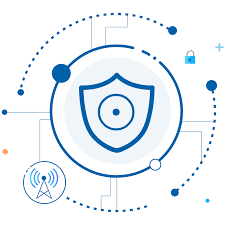The Crucial Importance of 5G Network Protection in a Hyper-Connected World
- Get link
- X
- Other Apps
As the world shifts towards faster and more connected technology, 5G network protection has become a vital focus for industries, governments, and cybersecurity experts. The fifth generation of wireless technology, known as 5G, promises to revolutionize how we communicate, work, and live, offering unprecedented speeds, low latency, and the ability to connect billions of devices. However, this leap forward also introduces new security challenges, making 5G network protection essential to safeguarding our digital future.
Understanding the Unique Security Challenges of 5G
5G networks are designed to support a wide range of applications, from autonomous vehicles and smart cities to remote healthcare and the Internet of Things (IoT). With this expansion of capabilities comes an increased attack surface, providing cybercriminals with more opportunities to exploit vulnerabilities. Some of the key security challenges associated with 5G include:
Increased Complexity: 5G networks are more complex than previous generations, relying on a combination of software-defined networking (SDN), network function virtualization (NFV), and edge computing. This complexity can create potential vulnerabilities if not properly managed and secured.
Massive Device Connectivity: 5G will connect billions of devices, ranging from smartphones to industrial sensors. Each connected device represents a potential entry point for cyberattacks, making it critical to implement strong security measures across the entire network.
Decentralized Architecture: Unlike previous generations, 5G networks use a more decentralized architecture, with data processing occurring closer to the user at the network edge. While this improves performance, it also creates new security challenges, as traditional centralized security measures may not be sufficient.
Supply Chain Risks: The 5G ecosystem relies on a global supply chain of hardware and software components. Ensuring the security of these components is challenging, as vulnerabilities in the supply chain can compromise the entire network.
Key Strategies for 5G Network Protection
To address the unique security challenges of 5G, a multi-layered approach is necessary. Here are some key strategies for 5G network protection:
Implement Advanced Encryption: Encrypting data as it moves through the network is essential to protect it from interception and tampering. Advanced encryption protocols should be used to secure communications between devices, base stations, and the core network.
Deploy AI-Powered Threat Detection: Artificial Intelligence (AI) and machine learning can play a crucial role in identifying and responding to threats in real-time. By analyzing network traffic and behavior patterns, AI-powered systems can detect anomalies and potential attacks before they cause harm.
Enhance Identity and Access Management (IAM): With the vast number of devices connected to 5G networks, robust identity and access management is critical. Implementing strong authentication methods, such as multi-factor authentication (MFA) and biometric verification, can prevent unauthorized access to the network.
Secure the Network Edge: As data processing moves to the edge in 5G networks, securing these edge computing nodes is essential. This includes implementing firewalls, intrusion detection systems, and secure boot processes to protect edge devices from cyber threats.
Strengthen Supply Chain Security: Protecting the 5G supply chain requires collaboration between manufacturers, service providers, and regulators. Implementing stringent security standards and conducting regular audits can help mitigate the risk of supply chain attacks.
Regular Security Audits and Updates: Given the dynamic nature of 5G networks, continuous monitoring and regular security audits are necessary to identify and address vulnerabilities. Additionally, ensuring that all network components receive timely security updates is crucial to protecting against emerging threats.
The Role of Collaboration in 5G Network Protection
Protecting 5G networks is not just the responsibility of telecom providers; it requires collaboration across the entire ecosystem, including governments, industry stakeholders, and cybersecurity experts. Governments play a critical role by establishing security regulations and standards for 5G networks, while industry stakeholders must work together to share threat intelligence and best practices.
Moreover, international cooperation is essential to address the global nature of 5G security challenges. Cyber threats do not respect national borders, and a coordinated global effort is necessary to protect 5G networks from sophisticated attacks.
Conclusion
As 5G networks become the backbone of our digital infrastructure, ensuring their protection is paramount. The advanced capabilities of 5G offer incredible opportunities for innovation, but they also introduce new security challenges that must be addressed with a proactive, multi-layered approach. By implementing robust security measures, leveraging AI and machine learning, and fostering collaboration across the ecosystem, we can build a secure foundation for the future of connectivity.
In a world where digital threats are constantly evolving, 5G network protection is not just a technical requirement—it is a strategic imperative for safeguarding our connected future.
- Get link
- X
- Other Apps





Comments
Post a Comment